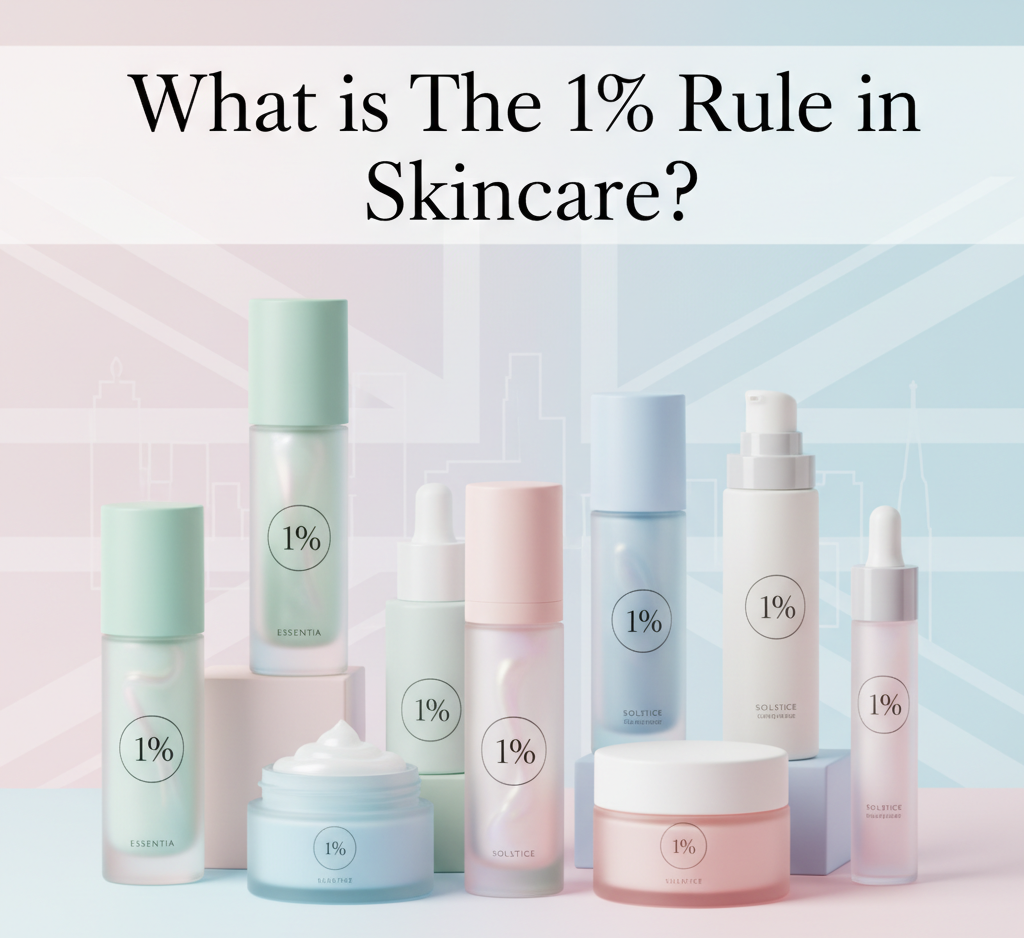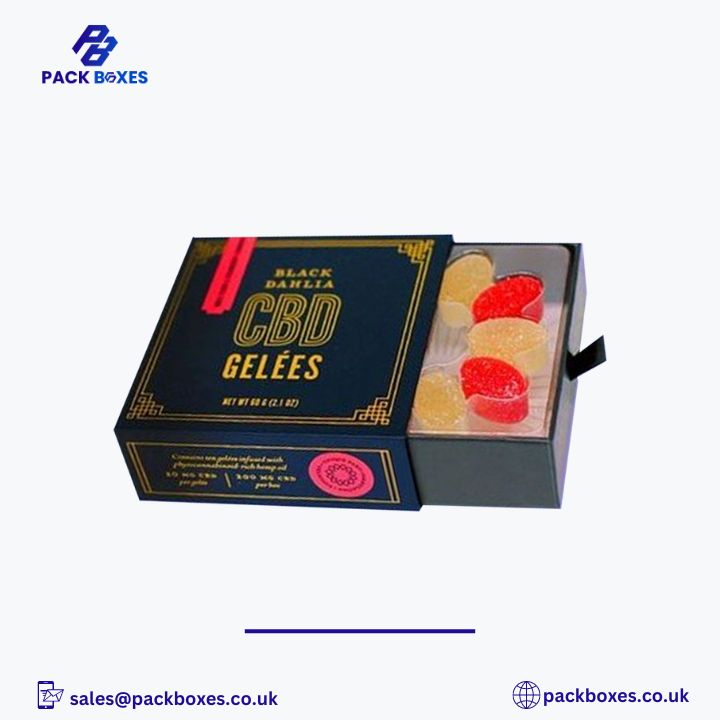In recent years, the skincare industry has experienced a boom, with consumers becoming more aware of the ingredients in their products, their effectiveness, and the overall skincare routine they follow. Among the many principles and guidelines in skincare, one concept has gained notable attention: the 1% rule. This rule is simple yet powerful, guiding both consumers and skincare brands toward making more informed and impactful choices.
In this article, we will explore what the 1% rule in skincare is, its importance, how it affects product formulations, and how Skincare Product Packaging plays a crucial role in ensuring this principle is applied correctly.
Understanding the 1% Rule in Skincare
The 1% rule in skincare is essentially a guideline that focuses on the concentration of active ingredients in skincare products. The idea is that small, incremental improvements can have a significant impact over time. Specifically, the rule suggests that a product should aim to include at least 1% of an active ingredient to provide measurable benefits to the skin.
For example, a moisturizer might contain 1% hyaluronic acid, or a serum may include 1% retinol. While these percentages may seem minimal, even such small concentrations can have noticeable results if consistently applied. The principle behind this rule emphasizes consistency, quality, and gradual improvement rather than overwhelming the skin with high concentrations of actives that might cause irritation or harm.
Why the 1% Rule Matters
1. Safety First
High concentrations of active ingredients, especially retinol, vitamin C, or acids, can be irritating to the skin. By following the 1% rule, brands ensure that products are both safe and effective for daily use. Consumers can experience visible improvements without the risk of adverse reactions.
2. Encourages Gradual Improvement
Skin health is a long-term commitment. The 1% rule teaches us that minor improvements, applied consistently, can yield significant long-term results. Skincare is not about instant miracles but about steady and sustainable progress.
3. Builds Trust with Consumers
When brands formulate products with the 1% rule in mind, it demonstrates transparency and care for the end-user. Consumers can trust that products are designed to be effective without being harmful, which enhances brand loyalty.
How Skincare Brands Use the 1% Rule
Skincare brands integrate the 1% rule in various ways:
Active Ingredient Formulation
Brands carefully calculate the concentration of active ingredients to ensure they meet the 1% threshold without exceeding safe limits. This applies to anti-aging products, brightening serums, exfoliating acids, and other specialized treatments.
Product Layering and Routine Design
Many skincare routines include multiple products, each contributing a small percentage of actives. When combined, these products help achieve the overall skincare goals without overwhelming the skin with high doses at once.
Transparency in Skincare Product Packaging
One of the most critical aspects of applying the 1% rule effectively is clear and accurate Skincare Product Packaging. Labels must disclose the percentage of active ingredients, usage instructions, and safety warnings. This transparency allows consumers to make informed decisions and follow the 1% rule in their daily routines.
The Role of Skincare Product Packaging in Implementing the 1% Rule
Skincare Product Packaging is not just about aesthetics; it plays a functional role in skincare efficacy. Here’s why it matters in the context of the 1% rule:
- Preservation of Active Ingredients – Active ingredients, such as vitamin C or retinol, are sensitive to light and air. Packaging that protects these ingredients ensures they remain effective at the 1% concentration intended by the brand.
- Clear Labeling and Instructions – Consumers must know the concentration of active ingredients and how to use them safely. Packaging provides this essential information.
- Consumer Education – Many consumers are unaware of the 1% rule. Packaging can educate them about why even small percentages matter, helping them adopt better skincare habits.
- Compliance and Safety – Packaging must comply with industry regulations, which often require listing ingredients in descending order of concentration. This ensures the 1% rule is transparent and verifiable.
In the UK, where skincare regulations are strict, Skincare Product Packaging serves as both a marketing tool and a legal safeguard, reinforcing the credibility of the brand.
Common Active Ingredients Used with the 1% Rule
Some popular actives often formulated around the 1% rule include:
- Retinol: Promotes cell turnover and reduces fine lines.
- Vitamin C: Brightens skin and provides antioxidant protection.
- Niacinamide: Improves skin texture and reduces inflammation.
- Salicylic Acid: Helps exfoliate and prevent breakouts.
- Hyaluronic Acid: Provides hydration without heavy formulations.
Even at 1% concentration, these ingredients can have remarkable benefits when used consistently.
Applying the 1% Rule in Your Skincare Routine
For consumers, the 1% rule is easy to apply if you follow these steps:
- Check the Label: Look for products that disclose the concentration of active ingredients on their Skincare Product Packaging.
- Start Low: Begin with products containing 1% of an active ingredient, especially if you have sensitive skin.
- Consistency is Key: Apply products regularly, ideally daily or as recommended, to see results over time.
- Layer Wisely: Use multiple products containing 1% actives, but avoid combining too many strong ingredients at once.
- Monitor Your Skin: Adjust your routine based on how your skin reacts to the products.
Advantages of Following the 1% Rule
- Reduces risk of irritation and over-exfoliation.
- Encourages long-term commitment to skincare.
- Makes products more versatile and suitable for all skin types.
- Enhances the effectiveness of Skincare Product Packaging in educating consumers.
How the 1% Rule Influences Product Marketing
Brands are now emphasizing the 1% rule in their marketing campaigns to highlight safety and efficacy. Statements like “contains 1% retinol for gentle anti-aging” or “1% niacinamide for even skin tone” appear prominently on product labels. This approach resonates with educated consumers who value transparency and results over hype.
Skincare Product Packaging plays a vital role here. Innovative, eco-friendly packaging not only preserves the actives but also communicates the brand’s commitment to quality and science-backed formulations.
The Science Behind the 1% Rule
Dermatologists and cosmetic chemists recommend the 1% rule because it strikes a balance between efficacy and safety. High concentrations may cause irritation, while too low percentages may be ineffective. Scientific studies consistently show that 1% concentrations of certain actives provide noticeable benefits over time, making the rule a cornerstone of evidence-based skincare.
Future Trends in Skincare and Packaging
As consumers become more informed, brands are focusing on:
- Sustainable Packaging: Eco-friendly materials for Skincare Product Packaging.
- Smart Packaging: QR codes and augmented reality for ingredient transparency.
- Customized Formulations: Products tailored to individual skin needs, still adhering to the 1% rule.
The integration of these trends ensures that skincare remains safe, effective, and environmentally responsible.
FAQs About the 1% Rule in Skincare
1. What does the 1% rule mean in skincare?
The 1% rule suggests that even a small concentration (1%) of an active ingredient in a skincare product can have significant effects over time if applied consistently.
2. Can I use multiple 1% active products together?
Yes, but avoid combining strong actives like retinol and acids at the same time to prevent irritation.
3. Why is 1% enough for skincare benefits?
Scientific studies show that small concentrations can stimulate changes in the skin without causing harm or sensitivity.
4. How does packaging affect the 1% rule?
Proper Skincare Product Packaging preserves actives, displays accurate percentages, and educates consumers on safe usage.
5. Are all 1% products safe for sensitive skin?
Generally, yes, but always patch test first and consult a dermatologist if unsure.
6. Does the 1% rule apply to all ingredients?
No, it mainly applies to potent actives like retinol, niacinamide, vitamin C, and acids.
7. How long does it take to see results from 1% products?
Results typically appear after consistent use over 4–8 weeks.
8. Can I find the 1% concentration on product labels?
Yes, responsible brands list active ingredient percentages clearly on Skincare Product Packaging.
9. Does the 1% rule apply to natural skincare?
Yes, natural actives like plant extracts can also follow the 1% rule for measurable benefits.
10. How does the 1% rule help in product formulation?
It guides chemists to balance effectiveness with safety, ensuring products deliver results without irritating the skin.
Conclusion
The 1% rule in skincare is a simple but transformative concept that emphasizes gradual improvement, safety, and transparency. By understanding and applying this principle, both consumers and brands can achieve healthier, more radiant skin.
Skincare Product Packaging plays a pivotal role in implementing this rule, ensuring that active ingredients remain effective and that consumers are well-informed. In the United Kingdom and beyond, the combination of science-backed formulations and responsible packaging is shaping the future of skincare.
By following the 1% rule, incorporating high-quality products into daily routines, and paying attention to packaging details, skincare becomes not just a routine but a long-term investment in skin health.







